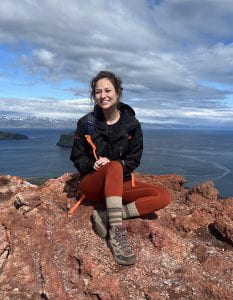PhD Student
Department of Earth and Planetary Sciences
lvandyke@ucsc.edu
Research interests: Microbiology, Microbial Ecology, Carbon Sequestration
Biography
I grew up in ChinoHills, California, and attended the University of Pennsylvania for my undergraduate degree with a double major in Biology and Earth & Environmental Science. Through my undergraduate research studies of microbiallife from the deep subseafloor of the Juan de Fuca Ridge flanks in Dr. Ileana Pérez-Rodríguez’s Geomicrobiology lab, I found my passion for research related to the connection between microbial ecology and environmental conditions, especially with respect to methanogenic species. Through the completion of my honors senior thesis and conference presentations, I decided I wanted to continue my education and pursue a PhD in the Earth Sciences. I want to learn more about the role of microbial species in the Carbon cycle, especially with respect to carbon sequestration and these microbial species impact, and are impacted by climate change. I joined the Paytan Lab at UCSC as an Earth and Planetary Sciences PhD student in the Fall of 2023 and am advised by Dr. Adina Paytan.
Research
My research uses quantitative Stable-Isotope Probing (qSIP) to link specific microbial taxa with changes in carbon sequestration efficiency of wetland soils. Due to the widespread effects of anthropogenic climate change, one way to limit warming is by working with nature via nature based solutions (NBS). In order to understand how and when wetlands operate as a carbon sink or a carbon source, we must study the underlying microbial processes within them and how microbial taxa react to seasonal and annual environmental changes. Microorganisms play an important role in chemical exchanges between soils and the atmosphere, carbon cycling through coastal estuarine wetlands are still poorly understood. My project aims to identify which factors can impact microbial ecology of wetland soils, and in turn, how these changes in community structures impact carbon sequestration capabilities of wetlands. Using this information, we can take more informed approaches to coastal wetland restoration, and potentially improve carbon sequestration capabilities of coastal estuarine wetlands
